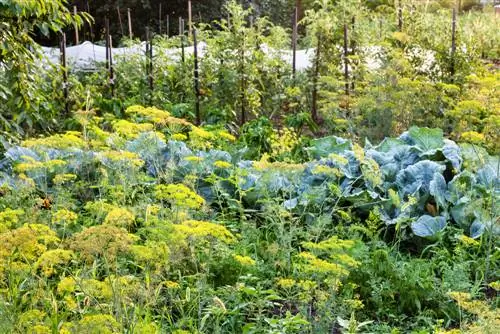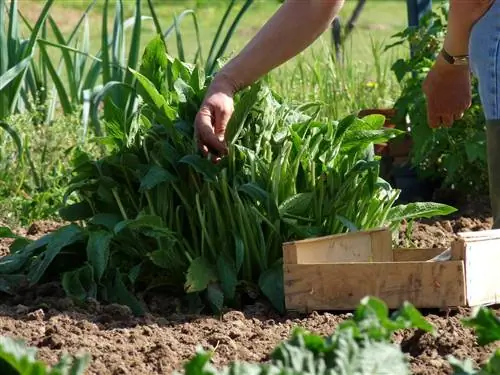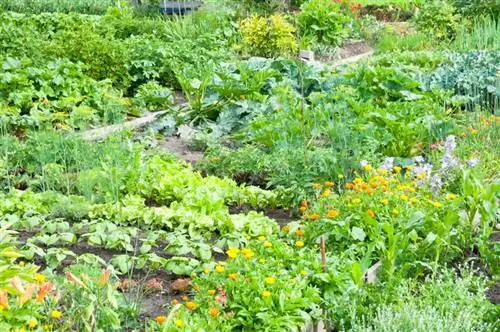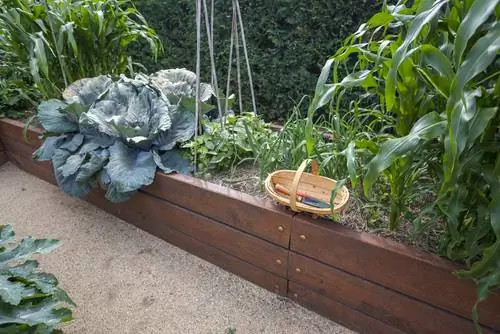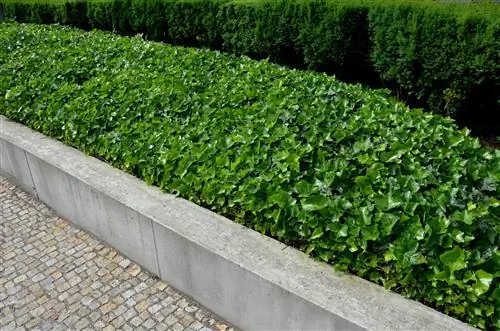- Author admin [email protected].
- Public 2023-12-25 17:45.
- Last modified 2025-01-23 11:21.
In permaculture, plants are grown in a colorful mix on a bed. But behind what looks like random chaos to the untrained eye, there is actually a lot of planning and a sophisticated system. When growing, it is particularly important to pay attention to which plants get along well with each other. Find out below how to create a he althy mixed culture in your permaculture garden.
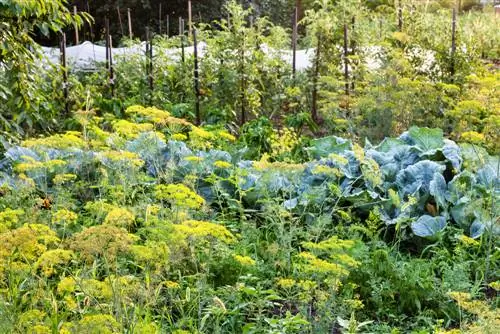
What is a sensible combination in a permaculture mixed culture?
In permaculture mixed culture, different plant species are combined to provide mutual protection and nutrient balance. Examples of useful combinations are: basil with cucumbers and tomatoes; cabbage beans; dill with cucumbers and carrots; Tagetes with strawberries and potatoes.
What is mixed culture?
Nowadays, monoculture is practiced in industrial agriculture, which means that only one type of fruit or vegetable is grown on large areas. This has the big disadvantage that this culture is extremely susceptible to diseases and pests. If just one plant is affected by something, all the others are also affected, since there are thousands of plants of the same species. Therefore, chemical (and usually harmful) agents are used in industrial agriculture to protect monocultures from diseases and pests. The risk of infestation is significantly lower in mixed crops or mixed row crops. On the one hand, it is not the entire crop that is at risk if, for example, a Colorado potato beetle gets into the garden, but only the potatoes. On the other hand, although Colorado beetles really like potatoes, they detest flax. If potatoes are planted together with flax, they are naturally protected against Colorado potato beetles. And that is exactly the idea of mixed culture: combining plants in such a way that they protect each other.
General information about mixed culture
- Strongly scented plants often keep pests away. For example, it is advisable to plant onions or dill between cucumbers, lettuce and carrots.
- Heavy-feeding plants should be planted in a different location every year and never in a place where a heavy-feeder was the previous year. You can find out more about crop rotation here.
- Larger plants should be planted in the middle, smaller ones on the edge.
- Beans enrich the soil with nitrogen, which cabbage and raspberries need, for example.
Sensible combinations for the permaculture garden
| protective plant | Planting together with |
|---|---|
| Valerian | Beans, peas, potatoes, brassicas |
| Basil | Cucumbers, tomatoes, brassicas |
| Beans | Cabbages, raspberries, blackberries |
| Savory | Beans |
| Dill | Cucumbers, carrots, brassicas |
| Peas | Berries, tomatoes |
| Lamb lettuce | Beans, leeks |
| Nasturtium | Fruit trees |
| Chervil | Salad |
| garlic | Strawberries, lettuce, tomatoes |
| Cabbage family | Celery, tomatoes |
| Leek | Carrot, strawberries |
| Radish | Leek |
| Marigold | Potatoes, cabbage, tomatoes |
| Sage | Cabbage family |
| Celery | Cabbage family |
| Tagetes | Strawberries, brassicas, potatoes, tomatoes |
| Tomato | Cabbage family |
| Wormwood | Black currant, leek |
| Vetch | Sunflower, berries |
| Onions | Strawberries, carrots |

